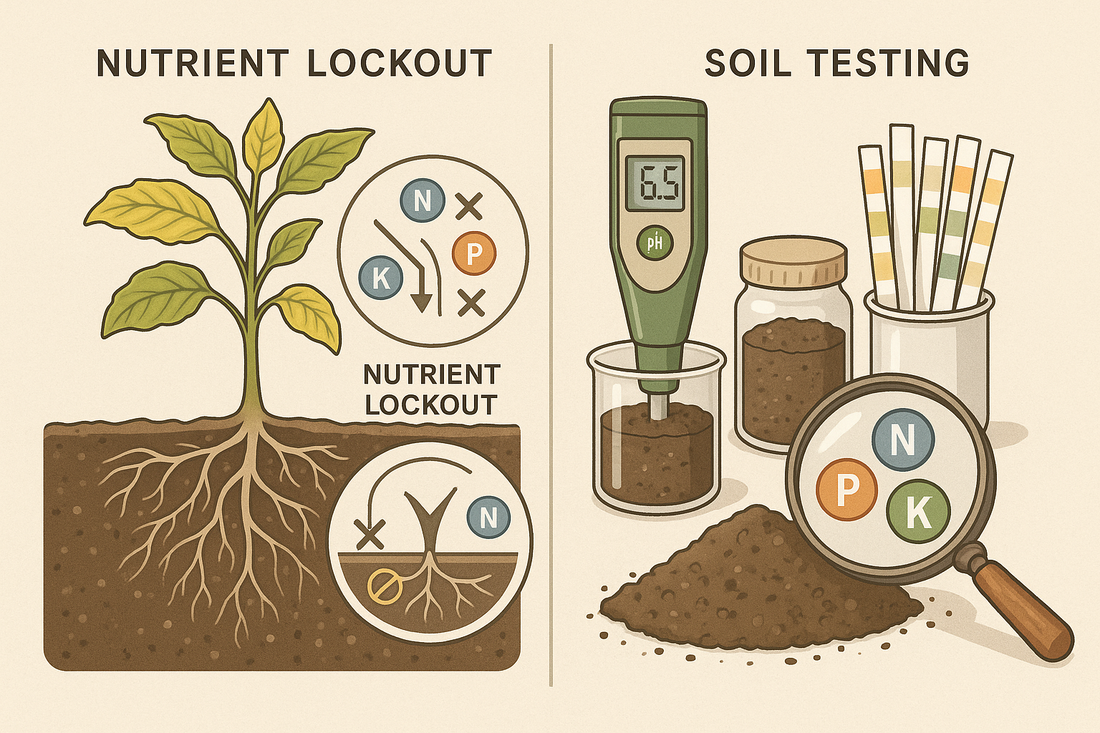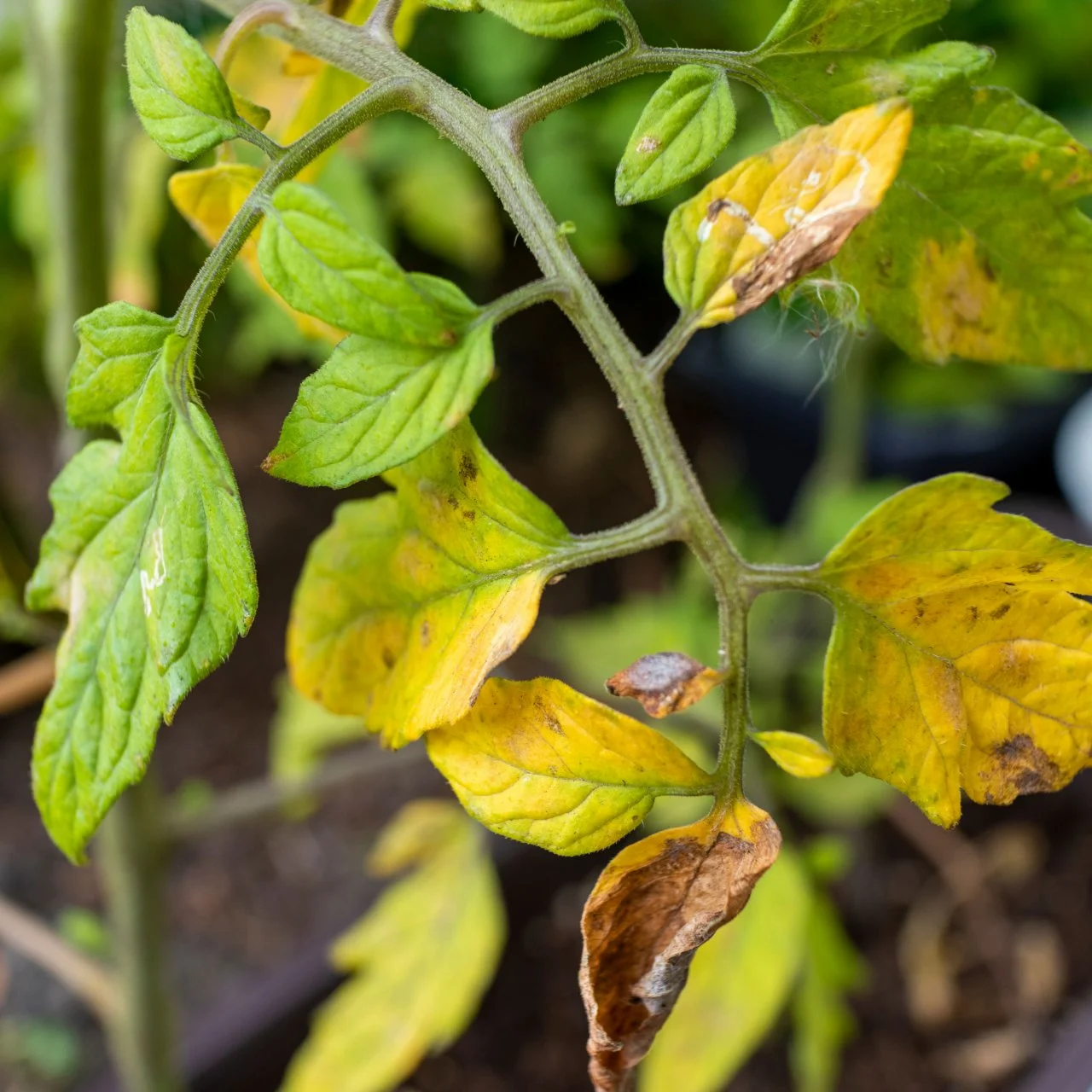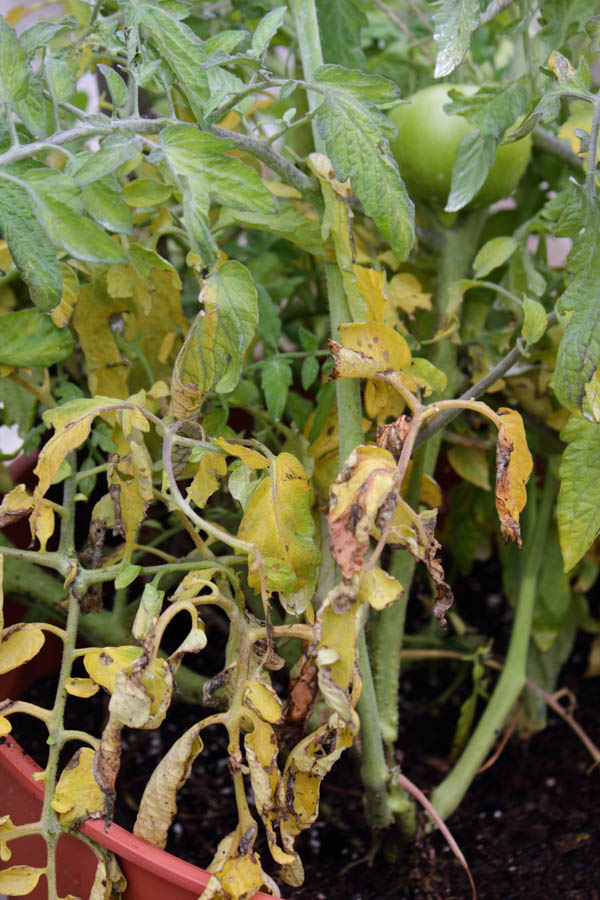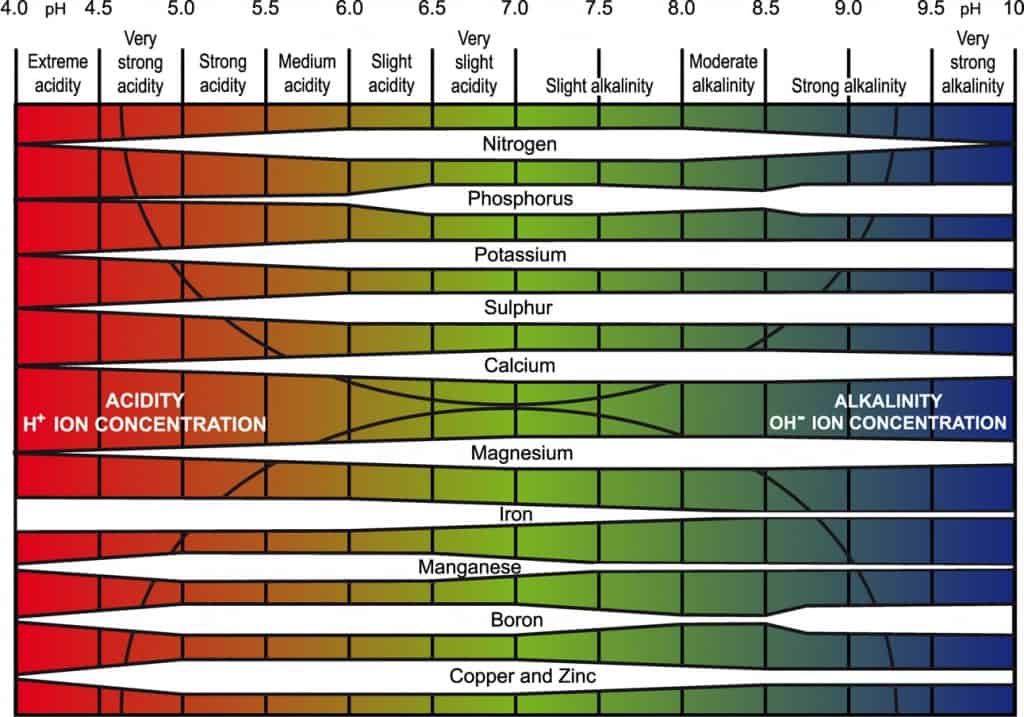As FAO reports 1.4 billion hectares of land salt-affected in 2025, nutrient lockout looms larger—with 2025's droughts intensifying due to climate change, is your garden at risk of nutrient lockout? Ever wondered why your thriving tomatoes suddenly develop yellow leaves despite regular fertilising? It might be nutrient lockout—a sneaky issue where plants can't access the nutrients they need, even when they're right there in the soil. This common problem affects gardeners worldwide, leading to stunted growth and disappointing harvests. In this comprehensive guide, we'll explore the mechanics of nutrient lockout, its causes, symptoms, and fixes, while incorporating the latest insights from 2024 and 2025 research on climate change effects on plant nutrient lockout, salinity, and drought. Whether you're growing vegetables like tomatoes and peppers, herbs, flowers, or even acid-loving plants like blueberries, understanding this can help you achieve bountiful yields. We'll also cover regional contexts, such as soil salinity in Australia, where arid conditions exacerbate these issues.
What is Nutrient Lockout?
At its core, nutrient lockout occurs when environmental or chemical barriers prevent plant roots from accessing essential nutrients. It's not a true deficiency—the nutrients are present but become "locked" due to imbalances in the growing environment. This can happen in soil-based gardens, hydroponic systems, or container setups. Unlike actual nutrient shortages, lockout often stems from interactions between pH, salts, and other compounds that alter nutrient solubility and root function. For instance, certain nutrients precipitate out of solution or bind too tightly to soil particles, rendering them unavailable to the plant.
In scientific terms, nutrient uptake relies on processes like diffusion, mass flow, and active transport across root membranes. When lockout intervenes, these mechanisms are disrupted, leading to symptoms that mimic deficiencies but require different interventions.
Plant-specific variations play a role here, including photosynthetic diversity (e.g., C3 plants like tomatoes vs. C4 plants like corn, which respond differently under elevated CO2 and drought). For example, fruiting crops like tomatoes are particularly sensitive during high-demand phases, such as flowering, where lockout can exacerbate issues faster in high-light environments. Acid-loving plants like blueberries thrive in lower pH ranges (4.5-5.5), while alkaline-tolerant ones like lavender prefer 6.5-7.5, making them more prone to lockout outside these narrow windows. In Australia, where soil salinity affects over 2 million hectares (primarily in Western Australia), these variations can intensify under drought conditions.
Causes of Nutrient Lockout: A Deeper Analysis
While pH imbalance is the most cited cause, nutrient lockout arises from a complex interplay of factors. Let's break it down:
pH Imbalance
Soil or solution pH is the primary gatekeeper for nutrient availability. Most plants thrive in a pH range of 6.0-7.0 for soil and 5.5-6.5 for hydroponics. At low pH (acidic conditions below 5.5), elements like aluminium and manganese become overly soluble and toxic, while phosphorus, calcium, and magnesium availability drops. Conversely, high pH (above 7.5) locks out iron, zinc, and copper by making them insoluble. This pH-nutrient relationship is visualised in availability charts, where the width of bars indicates optimal uptake ranges for each element.
Salt Buildup and Overfertilisation
Excessive fertiliser application leads to salt accumulation, which increases the electrical conductivity (EC) of the medium. High salts create osmotic stress, drawing water away from roots and inhibiting uptake. In hydroponics, this can happen rapidly, while in soil, it builds over time from repeated feedings without flushing. In Australian gardening, soil salinity from natural sources or irrigation can worsen this, interfering with nitrogen and potassium uptake. In Queensland, salinity reduces plant reproduction—test runoff regularly to monitor.
Water Quality Issues
Poor water quality, such as high chlorine, heavy metals, or mineral content (e.g., EC >2.0 mS/cm), can precipitate reactions that bind nutrients. For example, hard water with excess calcium or high bicarbonate in arid regions can antagonise magnesium uptake or cause alkaline drift, leading to imbalances. Regional variations matter—urban gardeners with municipal water should treat for chlorine by letting it stand or using reverse osmosis. Climate change is altering river and groundwater nutrient inputs, potentially increasing salinity in coastal areas. Water sources should ideally have PPM <500 to prevent competition with nutrients and avoid lockout.
Root Health and Environmental Stressors
Damaged roots from pests, diseases, overwatering, or compaction reduce absorption surface area. Biofilms—slimy microbial layers in hydro systems—can also clog roots and irrigation lines, further impeding nutrient flow. Recent research highlights how climate change amplifies this, with increased soil salinity from droughts disrupting microbial communities that aid nutrient solubilisation. UV-B radiation and flooding, emerging stressors under climate change, also alter nutrient cycling. Drought slows nutrient uptake, exacerbating scarcity.
Nutrient Antagonism
Certain nutrients compete for uptake sites. High potassium levels can block magnesium, while excess phosphorus hinders zinc absorption. This is exacerbated by incompatible fertiliser mixes.
Role of Chelates and Advanced Formulations
To combat lockout, especially under variable conditions, chelated nutrients (e.g., iron chelates like EDTA or EDDHA) keep micronutrients soluble across wider pH ranges. A 2025 study on sustainable nutrient management notes that sugar alcohol-chelated calcium fertilisers improve uptake and crop quality under climate stress, making them ideal for organic and conventional growers alike.
Nutrient-Specific Lockouts
Nutrient lockout doesn't affect all elements equally. Here's a breakdown of common ones, including optimal soil levels (ppm or mg/kg, as ppm = mg/kg for soil tests) and stage-specific PPM ranges for hydroponic or general nutrient solutions (e.g., seedlings: 200-400 PPM to avoid lockout; vegetative: 600-900 PPM; flowering: 1000-1400 PPM; aim for runoff <700 PPM and water sources <500 PPM to prevent competition):
- Iron Lockout: Often in high-pH soils, causing interveinal chlorosis (yellowing between veins) on young leaves. Optimal: 1-5 ppm DTPA extract.
- Phosphorus Lockout: In cold or acidic conditions, leading to purple stems and stunted roots. Optimal for vegetables: 30-40 ppm (mineral soils).
- Calcium Lockout: From excess salts or antagonism, resulting in blossom end rot in tomatoes. Optimal: Varies, but soil test >200 ppm generally sufficient.
- Magnesium Lockout: Due to high potassium, showing yellowing on older leaves with green veins. Optimal: 50-100 ppm.
- Potassium Lockout: High levels above 175 ppm may not require fertilisation for vegetables.
- Nitrogen (Nitrate) Lockout: Optimal >25 ppm for crops like corn.
For a visual reference, see this nutrient availability chart:
| Nutrient | Optimal pH Range | Optimal Soil Level (ppm/mg/kg) | Lockout Symptoms |
|---|---|---|---|
| Nitrogen | 5.5-8.0 | >25 (nitrate for corn) | Yellowing older leaves |
| Phosphorus | 6.0-7.5 | 30-40 (vegetables) | Purple stems, slow growth |
| Potassium | 6.0-8.0 | >175 no response needed | Burnt edges, weak stems |
| Calcium | 6.5-8.0 | >200 | Blossom end rot |
| Magnesium | 6.0-7.5 | 50-100 | Interveinal yellowing |
| Iron | 5.0-6.5 | 1-5 (DTPA) | Yellow new leaves |
| Zinc | 5.5-7.0 | 1-5 | Small leaves, chlorosis |
Factors Impacting Nutrient Uptake
Beyond direct causes, several environmental and soil factors influence how effectively plants absorb nutrients, amplifying the risk of lockout:
- Temperature: Root activity peaks at 20-25°C. Cold soils slow metabolic processes, reducing uptake, while heat stresses roots and increases evaporation, concentrating salts.
- Humidity and Light: High humidity can lead to poor transpiration, limiting nutrient transport via the xylem. Insufficient light reduces photosynthesis, lowering the energy available for active uptake.
- Soil Composition and CEC: Soils with low cation exchange capacity (CEC) fail to hold nutrients effectively, leading to leaching. Clay soils have high CEC but can bind nutrients too tightly in alkaline conditions.
- Microbial Activity: Beneficial microbes aid in nutrient solubilisation, but imbalances (e.g., from fungicides) disrupt this symbiosis. Emerging research from 2025 shows climate change perturbs these microbes, potentially increasing lockout in warming soils.
- Watering Practices: Overwatering creates anaerobic conditions, promoting root rot, while underwatering stresses plants, closing stomata and halting uptake.
- Salinity: <0.2% optimal; higher levels increase lockout via osmosis, common in Australian arid zones. Globally, 1.4 billion hectares (over 10% of land) are salt-affected, with salinity disrupting microbial communities, N cycle, and respiration. In Australia, natural salinity from weathering and sea salt affects over 2 million hectares, primarily in Western Australia.
- N Deposition: Varies by region; drives uptake but risks imbalances under climate change, modulated by microbes.
These factors don't act in isolation; for example, high temperatures combined with low humidity can accelerate salt buildup, creating a cascade effect toward lockout.
| Factor | Optimal Range for Most Plants | Impact on Uptake if Out of Range |
|---|---|---|
| Soil pH | 6.0-7.0 | Locks out micronutrients in extremes |
| Temperature | 20-25°C | Slows root function in cold; stresses in heat |
| CEC | Medium to high (10-20 meq/100g) | Low CEC leads to nutrient loss via leaching |
| Water EC | <1.5 mS/cm | High EC (>2.0 mS/cm) causes osmotic stress |
| Humidity | 40-60% | High reduces transpiration; low accelerates evaporation |
| Salinity | <0.2% | Increases lockout via osmosis |
| N Deposition | Varies by region | Drives uptake but risks imbalances |
Symptoms to Watch For
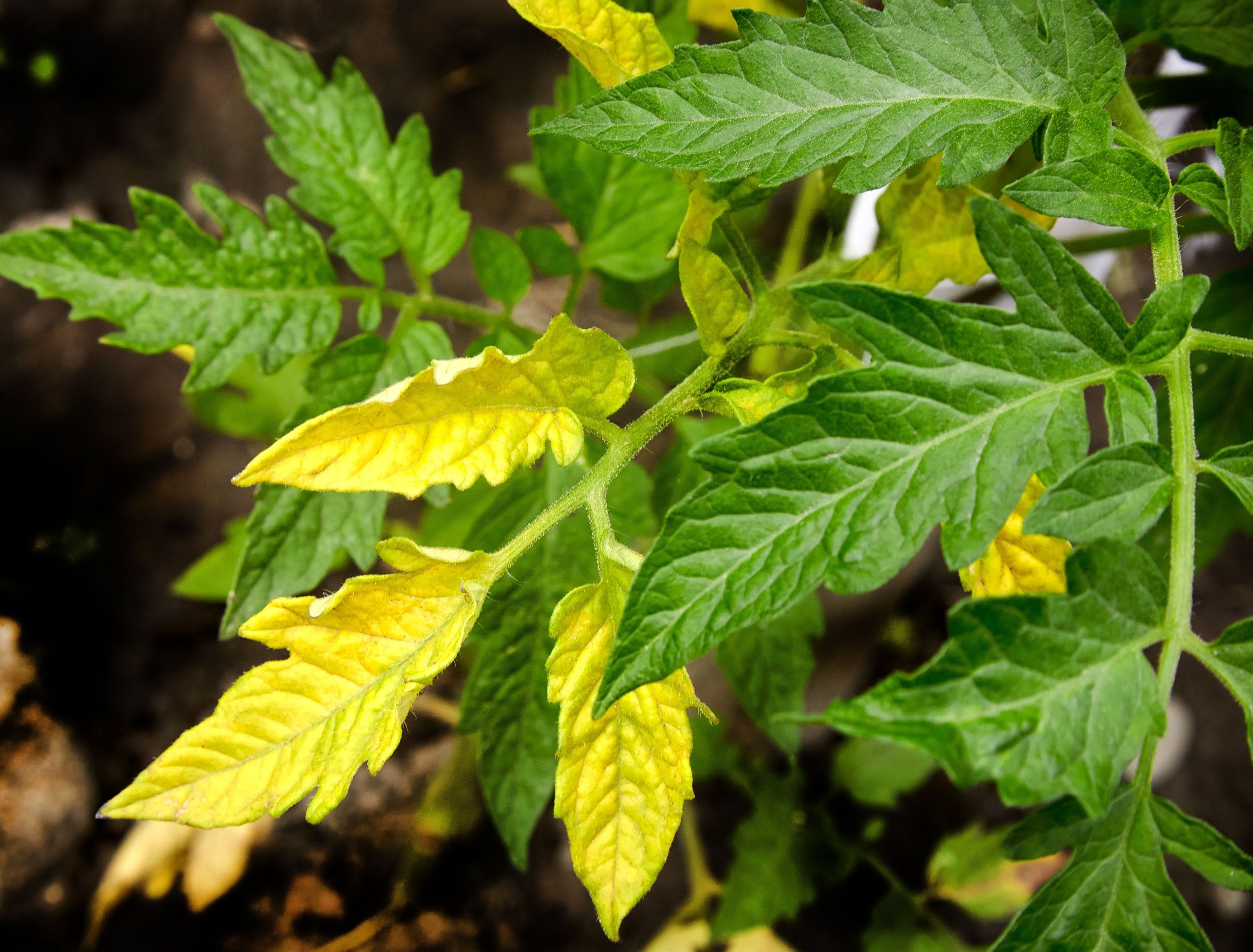
Early signs include chlorosis (yellowing between veins), starting on older leaves, burnt tips, stunted growth, and wilting despite adequate water. Advanced symptoms may involve leaf curling, necrosis (dead spots), purple stems, and defoliation. These mimic specific deficiencies (e.g., iron chlorosis from high pH), making diagnosis tricky without testing. In tomatoes, symptoms progress faster during fruiting, often showing as poor fruit set.
A 2023 PMC study on foliar symptomology notes that deficiencies appear quicker in high-light setups. For accurate diagnosis, consider advanced tools like tissue analysis or sap testing alongside visual checks. Tissue testing involves sending leaf samples to labs for nutrient profiling, while sap testing measures mobile nutrients in real-time.
Impacts on Plant Health and Growth
Climate Change: Emerging Threats
The consequences of nutrient lockout extend beyond visible symptoms. Physiologically, it disrupts photosynthesis, enzyme function, and hormone balance, leading to weakened immunity against pests and diseases. In vegetables, this can result in poor fruit set, smaller yields, and nutritional deficiencies in the produce itself—preliminary 2025 research links higher CO2 and temperatures to reduced crop nutritional quality. A 2025 Frontiers study warns of combined salinity-drought reducing K uptake by up to 50%, aggravating drought with consequences for plant nutrition. Elevated CO2 under drought can mask symptoms but reduce nutritional quality (e.g., lower protein/minerals), and plants adapt to nutrient scarcity by reshaping carbon sinks—ignoring this underestimates global sinks. Nitrogen deposition and climate drive plant uptake, modulated by microbes, while grassland management affects leaf nutrients under eCO2. Combined stressors like UV-B/flooding alter cycling, and photosynthetic pathways influence nutrient content under climate change. Drought slows nutrient uptake, exacerbating scarcity. Economically, for commercial growers, lockout can cause significant crop losses. Long-term, repeated episodes degrade soil health, requiring costly amendments. In extreme cases, untreated lockout can lead to plant death, especially in sensitive crops like tomatoes during fruiting stages.
From an environmental perspective, over-flushing can leach nutrients into waterways, contributing to pollution—use sustainable practices to minimise this. Over-reliance on synthetics can contribute to salinity buildup. In Australia, salinity affects production by interfering with nutrient uptake, reducing growth and reproduction—in Queensland, for instance, it reduces plant reproduction and harms wetlands.
Common Mistakes Contributing to Nutrient Lockout
Gardeners often unwittingly contribute to lockout through avoidable errors:
- Overfeeding Fertilisers: Applying too much or too frequently without monitoring EC leads to salt buildup. Mistake: Assuming "more is better" for growth.
- Neglecting pH Monitoring: Failing to test and adjust pH regularly, especially after adding amendments. Mistake: Using unbuffered water or ignoring natural soil drift.
- Using Poor-Quality Water: Tap water with chlorine or high minerals isn't treated, causing reactions. Mistake: Not letting chlorine evaporate or using reverse osmosis.
- Inconsistent Watering: Overwatering compacts soil and drowns roots, while erratic schedules stress plants. Mistake: Watering on a fixed schedule rather than based on soil moisture.
- Mixing Incompatible Products: Combining fertilisers without checking interactions. Mistake: Switching brands mid-cycle without flushing.
- Ignoring Environmental Controls: Not accounting for temperature fluctuations or poor airflow. Mistake: Placing plants in drafty or overheated areas.
By recognising these pitfalls, you can adopt proactive habits to mitigate risks. Organic growers note that natural fertilisers buffer pH better but can cause microbial imbalances if over-applied, while synthetic users benefit from chelates for stability.
Case Study: Tomato Hydro Setup
In a typical hydroponic tomato grow, pH drifting from 5.8 to 7.0 locked out zinc, causing small leaves and chlorosis. Flushing and acidification fixed it, restoring growth within a week.
Case Study: Drought-Stressed Peppers
Drought-stressed peppers under salinity showed rapid lockout, with reduced potassium uptake leading to burnt edges—fixed via chelates and mulch to combat soil degradation.
Case Study: Wheat Roots Under Salinity
Wheat roots under salinity exhibit osmotic stress, reducing growth—common in Australian farmlands, mitigated by adapted varieties.
How to Fix Nutrient Lockout
Immediate action is key: Cease nutrient additions and flush with pH-balanced water (6.0) at three times the container volume to leach salts. Allow partial drying, then resume with diluted (half-strength) fertilisers while monitoring pH and EC daily. Aim for a 50% EC drop post-flush as a success metric; test bi-weekly in drought seasons. For severe cases, root pruning or beneficial microbes may help restore health. In salinity-prone areas like Australia, use mulch to reduce evaporation and salinity buildup.
Prevention Tips
Prevention hinges on vigilance: Test pH and EC weekly during growth phases (bi-weekly otherwise, or more in drought seasons), use quality inputs, flush every 2-4 weeks, and maintain optimal environmental conditions. Incorporate organic matter to buffer soil and enhance microbial activity. For hydroponics, regular reservoir changes prevent buildup. Consider chelated fertilisers for resilience against climate-induced stresses. In arid regions like Australia, test for salinity regularly and use halophytes or mulch for remediation—use mulch to combat drought-induced salinity. For CO2-enriched environments, adjust nutrients to avoid lockout.
Performing Soil Slurry Tests for pH and EC
Regular testing of your soil's pH and electrical conductivity (EC) is crucial for preventing nutrient lockout, as it allows you to detect imbalances early. One of the most accurate methods for this is the soil slurry test, which provides a reliable reading of the growing medium's conditions. Here's a step-by-step guide to performing it:
- Collect a Soil Sample: Take soil from multiple spots in your pot or garden bed, ideally halfway between the plant stem and the edge of the container. Avoid surface soil—dig down 5-10 cm for a representative sample. Dry the soil slightly if it's too wet.
- Prepare the Slurry: Use a 1:2 or 1:5 ratio of soil to distilled or deionised water (to avoid introducing contaminants). For example, mix 20g of soil with 40g (1:2) or 100g (1:5) of water in a clean glass jar or container. The 1:5 ratio is better for high-EC scenarios as it dilutes salts more.
- Mix Thoroughly: Shake or stir the mixture vigorously for 5-10 minutes to ensure even distribution. A magnetic stirrer can be used for better consistency if available. Avoid metal containers to prevent contamination.
- Let It Settle: Allow the slurry to sit for 30-60 minutes so the solids settle to the bottom, leaving a clearer liquid on top (extend to 1 hour with shaking and standing for portable meters).
- Measure pH and EC: Calibrate your metres before each use with buffer solutions (e.g., pH 4, 7, 10). Insert a calibrated pH metre into the liquid to read the pH, using automatic temperature compensation if available. Then, use an EC metre to measure the electrical conductivity. Record the values and compare them to optimal ranges (pH 6.0-7.0 for soil; EC below 1.5 mS/cm for most plants).
This method is beneficial because it simulates the root environment more accurately than dry testing or runoff methods, providing insights into nutrient availability and salt levels that could lead to lockout. Slurry tests are more representative for pH but may underestimate EC in compacted soils compared to direct probes. Using professional tools from a garden or hydroponics shop, such as digital pH and EC metres, enhances accuracy far beyond basic test strips. These devices offer precise, repeatable readings, often with features like automatic temperature compensation, which accounts for environmental variables that could skew results—reducing errors by 20-30%, per 2025 hydro guides.
To get started with accurate testing, Check this out: pH Kit – it's a great tool for any gardener looking to maintain optimal soil conditions.
Alternative Testing Methods
Complement slurry with other methods for comprehensive insights:
- Pour-Thru (Leachate): Apply water to the container top to collect leachate for quick EC checks; ideal for hydro/soil without disturbing roots.
- Saturated Media Extract (SME): Mix soil to saturation, extract solution for full nutrient profile; lab-standard but equipment-heavy.
- 1:2 Dilution: Simple mix of soil and water; good for onsite pH but less precise for EC in compacted soils.
- Plug Squeeze: Squeeze solution from small plugs post-testing; quick for small containers but limited to plugs. Irrigate the substrate with diluted water until thoroughly wet, sample from at least 5 plug trays, mix for uniformity, and squeeze into a cup for measurement.
Direct Probe Testing
Insert a calibrated EC probe directly into moist soil for instant readings—power up, insert tip 1 inch below surface 30-60 minutes after irrigation. Ideal for subsoil EC and compacted areas where slurry underestimates; three types include pore water, bulk, or saturation extract EC. Emerging 2025 tech combines ultrasound with pH/EC for soil texture prediction, estimating porosity non-invasively.
| Method | Pros | Cons | Best For |
|---|---|---|---|
| Slurry (1:2/1:5) | Simulates root zone | Time-consuming | Accurate pH/EC |
| Pour-Thru | Quick leachate test | Less precise for compacted soil | Hydro/soil EC checks |
| SME | Lab-standard | Requires equipment | Full nutrient profile |
| Direct Probe | Instant readings | Minimal disruption | Compacted soils EC |
| Plug Squeeze | Quick for small containers | Limited to plugs | Container gardening EC |
Glossary
- CEC (Cation Exchange Capacity): Soil's ability to hold and exchange positively charged nutrients.
- EC (Electrical Conductivity): Measure of salt levels in soil or water.
- Osmotic Stress: High salts prevent water uptake, causing wilting.
- Chlorosis: Yellowing of leaves due to nutrient issues.
- Necrosis: Dead tissue spots on leaves.
- N Deposition: Atmospheric nitrogen adding to soils under climate change.
FAQ
- Is nutrient lockout reversible? Yes, if caught early through flushing and pH adjustment, plants often recover within 1-2 weeks.
- How does climate change affect lockout? Rising temperatures and droughts increase soil salinity, disrupting microbes and nutrient cycles, making prevention harder. Combined salinity-drought can reduce K uptake by 50%.
- Organic vs. Synthetic: Which is better? Organics buffer pH naturally but slower; synthetics with chelates offer quick fixes but require careful monitoring.
- How does eCO2 affect lockout? It can mask symptoms but reduce nutritional quality under drought.
- How does salinity cause lockout? It disrupts N uptake and microbial activity, reducing growth and reproduction.
What climate challenges do you face in your garden? What salinity issues do you face? Share your lockout stories in the comments—what worked for you?
By integrating these strategies, you'll foster resilient plants capable of efficient nutrient uptake. Test your soil today and happy gardening—may your harvests be bountiful!
Information based on 2025 research; consult experts for specific advice.

